
How to Use Soil Moisture Module: Examples, Pinouts, and Specs
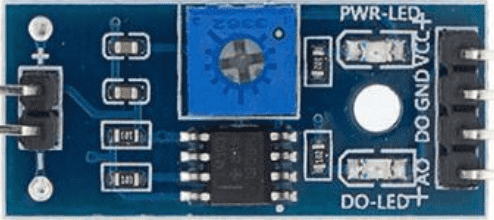
 Design with Soil Moisture Module in Cirkit Designer
Design with Soil Moisture Module in Cirkit DesignerIntroduction
The Soil Moisture Module is a sensor designed to measure the volumetric water content in soil. It provides real-time data that can be used to monitor soil moisture levels, making it an essential tool for irrigation systems, agricultural automation, and gardening projects. By integrating this module into a circuit, users can optimize water usage and ensure plants receive adequate hydration.
Explore Projects Built with Soil Moisture Module
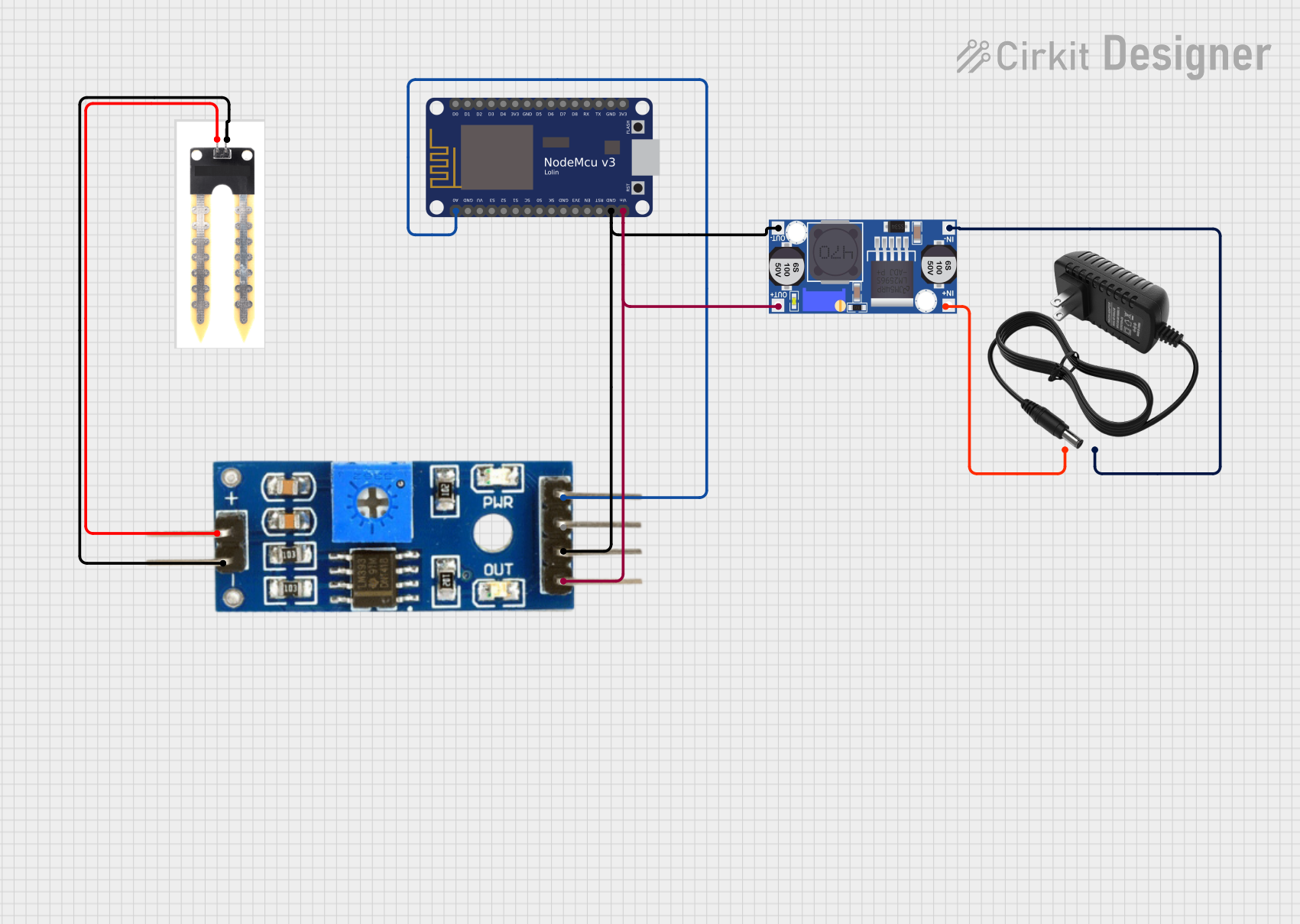
 Open Project in Cirkit Designer
Open Project in Cirkit Designer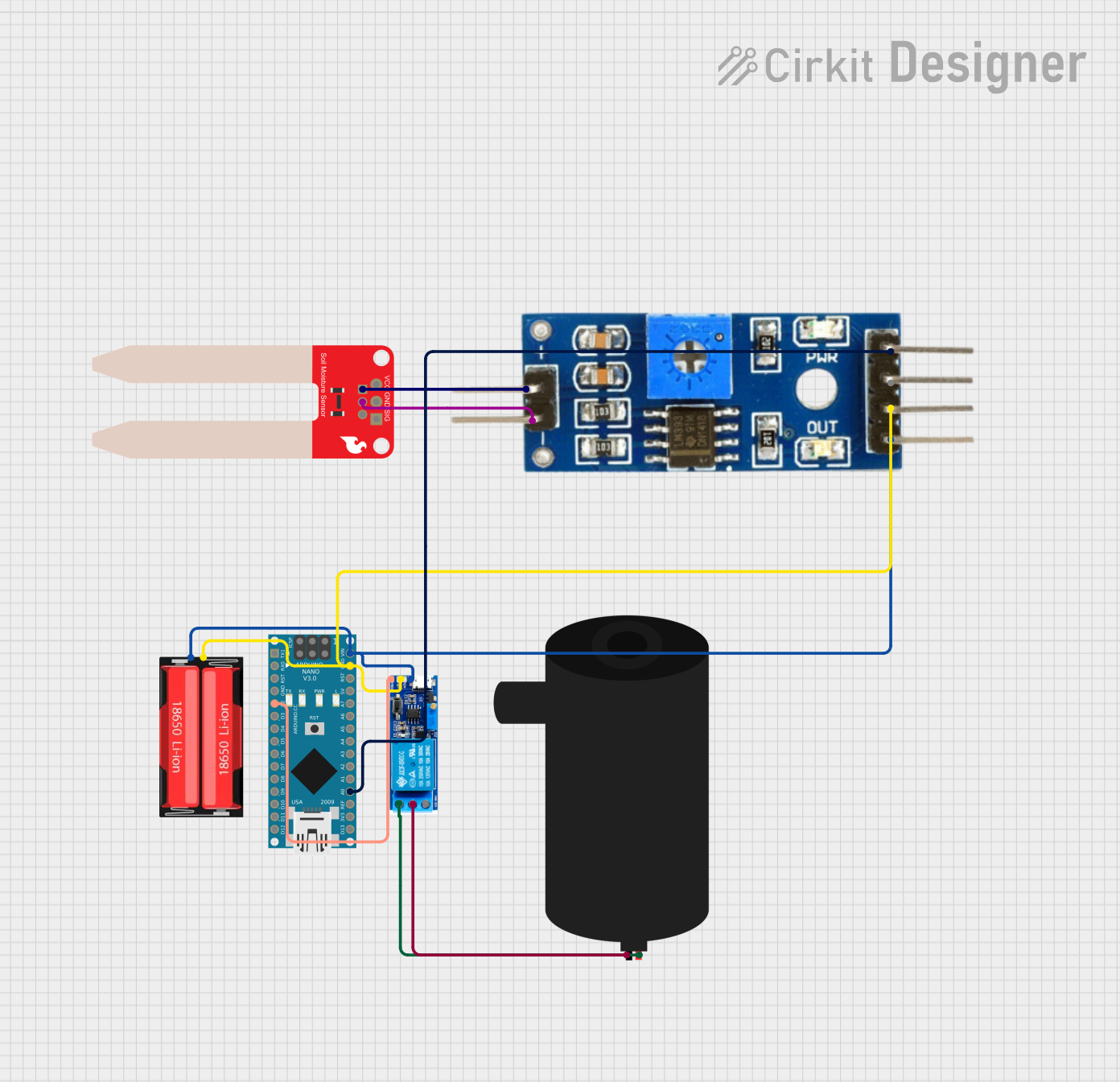
 Open Project in Cirkit Designer
Open Project in Cirkit Designer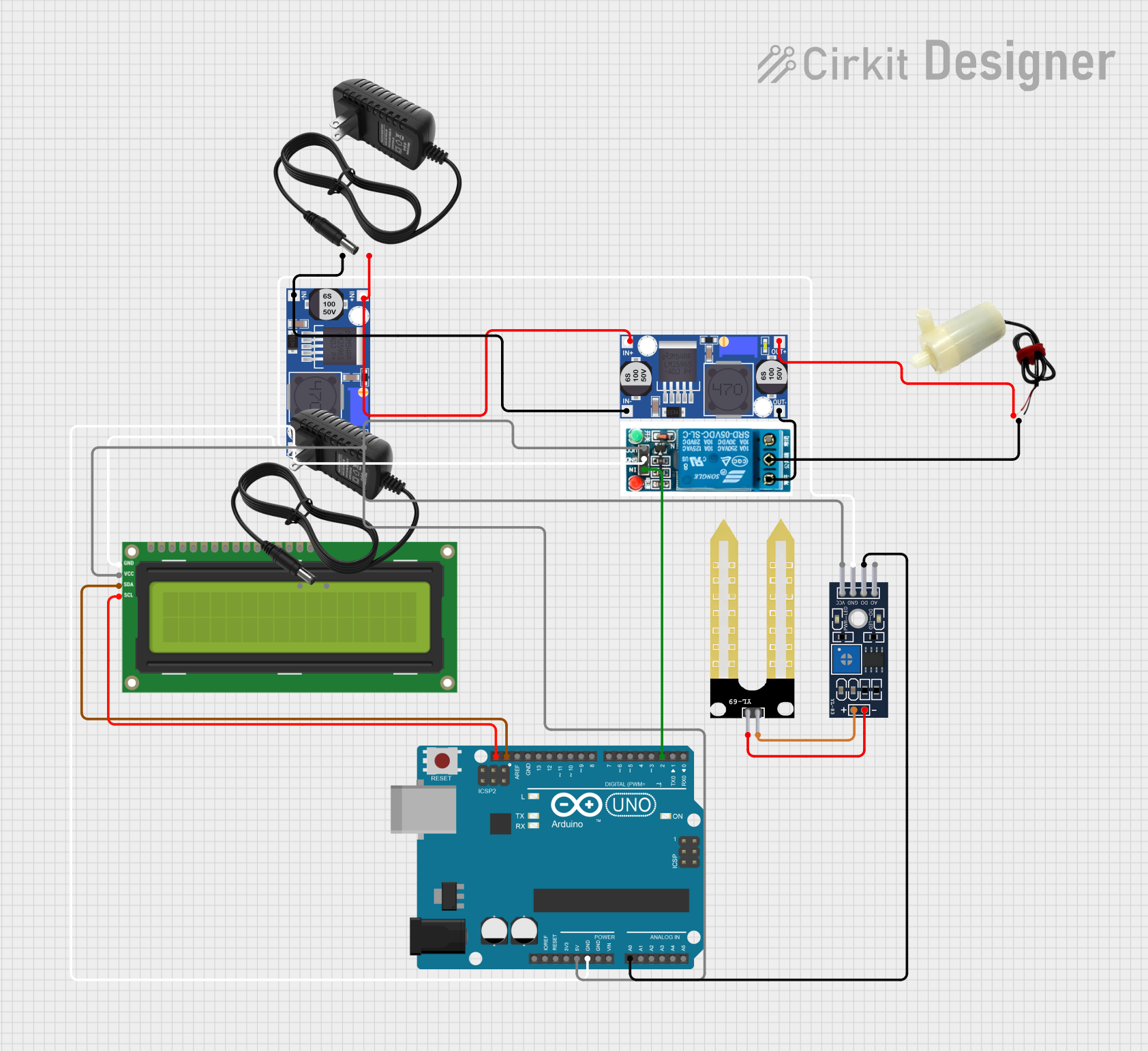
 Open Project in Cirkit Designer
Open Project in Cirkit Designer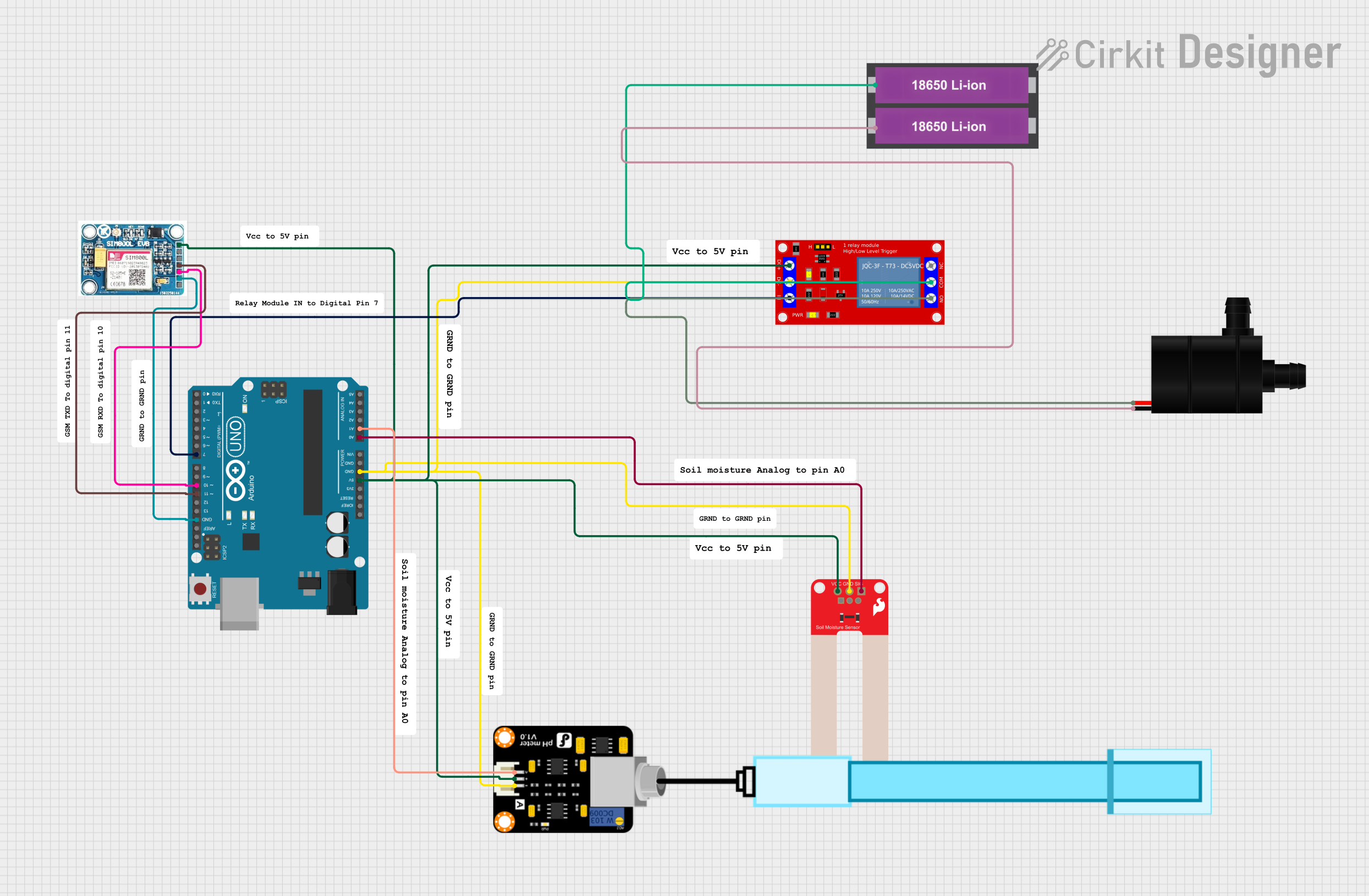
 Open Project in Cirkit Designer
Open Project in Cirkit DesignerExplore Projects Built with Soil Moisture Module

 Open Project in Cirkit Designer
Open Project in Cirkit Designer
 Open Project in Cirkit Designer
Open Project in Cirkit Designer
 Open Project in Cirkit Designer
Open Project in Cirkit Designer
 Open Project in Cirkit Designer
Open Project in Cirkit DesignerCommon Applications and Use Cases
- Automated irrigation systems
- Smart gardening projects
- Agricultural monitoring and control
- Environmental research and soil analysis
- DIY projects for plant care
Technical Specifications
The Soil Moisture Module typically consists of two main parts: the sensor probe and the control board. Below are the key technical details:
General Specifications
- Operating Voltage: 3.3V to 5V
- Output Types: Analog and Digital
- Current Consumption: < 20mA
- Dimensions: Varies by model, typically compact for easy integration
- Output Voltage Range: 0V to 4.2V (Analog output)
- Adjustable Sensitivity: Via onboard potentiometer (for digital output)
Pin Configuration and Descriptions
The module typically has a 4-pin interface. The pinout is as follows:
| Pin | Name | Description |
|---|---|---|
| 1 | VCC | Power supply input (3.3V to 5V) |
| 2 | GND | Ground connection |
| 3 | A0 | Analog output pin (provides a voltage proportional to soil moisture level) |
| 4 | D0 | Digital output pin (HIGH or LOW based on moisture threshold set by potentiometer) |
Usage Instructions
How to Use the Component in a Circuit
Wiring the Module:
- Connect the VCC pin to the 3.3V or 5V power supply of your microcontroller.
- Connect the GND pin to the ground of your microcontroller.
- Connect the A0 pin to an analog input pin on your microcontroller (e.g., A0 on Arduino UNO).
- Optionally, connect the D0 pin to a digital input pin if you want to use the digital output.
Adjusting Sensitivity:
- Use the onboard potentiometer to set the moisture threshold for the digital output. Turn clockwise to increase sensitivity and counterclockwise to decrease it.
Reading Data:
- Use the analog output (A0) for precise moisture level readings.
- Use the digital output (D0) for a simple HIGH/LOW signal indicating whether the soil is dry or wet.
Important Considerations and Best Practices
- Avoid prolonged exposure of the sensor probe to water, as it may corrode over time. Use corrosion-resistant probes for long-term applications.
- Ensure proper calibration of the sensor for your specific soil type and environmental conditions.
- Place the sensor probe at the desired depth in the soil for accurate readings.
- Avoid placing the sensor near fertilizers or chemicals that may affect its accuracy.
Example Code for Arduino UNO
Below is an example of how to use the Soil Moisture Module with an Arduino UNO:
// Define pin connections
const int analogPin = A0; // Analog output pin connected to A0
const int digitalPin = 2; // Digital output pin connected to D2
const int ledPin = 13; // LED pin to indicate dry soil
void setup() {
pinMode(digitalPin, INPUT); // Set digital pin as input
pinMode(ledPin, OUTPUT); // Set LED pin as output
Serial.begin(9600); // Initialize serial communication
}
void loop() {
// Read analog value from the sensor
int moistureValue = analogRead(analogPin);
// Read digital value from the sensor
int digitalValue = digitalRead(digitalPin);
// Print analog value to the Serial Monitor
Serial.print("Soil Moisture (Analog): ");
Serial.println(moistureValue);
// Check digital output and control LED
if (digitalValue == LOW) {
// Soil is dry, turn on LED
digitalWrite(ledPin, HIGH);
Serial.println("Soil is dry!");
} else {
// Soil is wet, turn off LED
digitalWrite(ledPin, LOW);
Serial.println("Soil is wet!");
}
delay(1000); // Wait for 1 second before next reading
}
Troubleshooting and FAQs
Common Issues and Solutions
No Output or Incorrect Readings:
- Ensure the module is properly powered (3.3V to 5V).
- Check all connections for loose wires or incorrect pin assignments.
- Verify that the sensor probe is inserted into the soil.
Corrosion of Sensor Probes:
- Use corrosion-resistant probes for long-term applications.
- Avoid leaving the sensor in waterlogged soil for extended periods.
Inconsistent Readings:
- Calibrate the sensor for your specific soil type using the potentiometer.
- Ensure the sensor is placed at a consistent depth in the soil.
Digital Output Always HIGH or LOW:
- Adjust the potentiometer to set an appropriate moisture threshold.
- Verify that the digital pin is correctly connected to the microcontroller.
FAQs
Q: Can the Soil Moisture Module be used outdoors?
A: Yes, but ensure the control board is protected from water and environmental elements. Use waterproof probes for outdoor applications.
Q: How do I know if the soil is dry or wet?
A: The analog output provides a voltage proportional to the soil moisture level. A lower voltage indicates dry soil, while a higher voltage indicates wet soil. The digital output can also be used to indicate dry (LOW) or wet (HIGH) soil based on the threshold set by the potentiometer.
Q: Can I use this module with a 3.3V microcontroller?
A: Yes, the module is compatible with both 3.3V and 5V systems. Ensure the power supply matches your microcontroller's voltage.
Q: How often should I calibrate the sensor?
A: Calibration is recommended whenever the sensor is used in a new soil type or environmental condition.